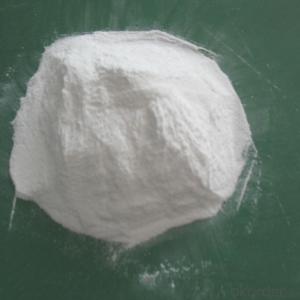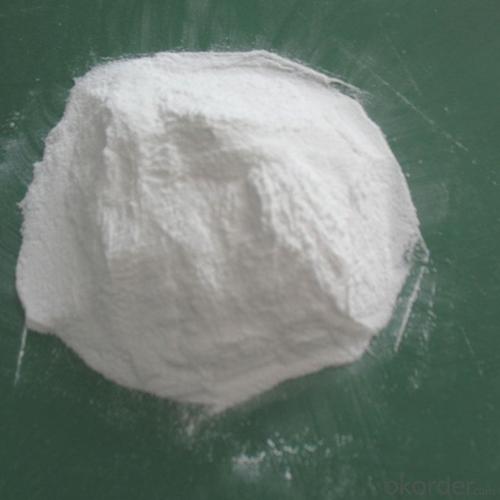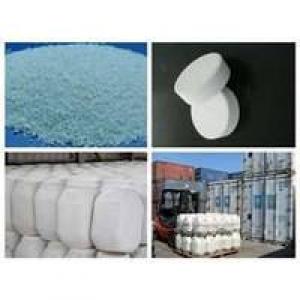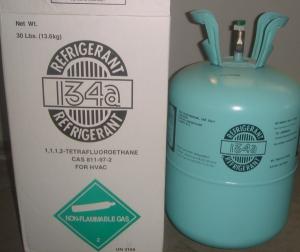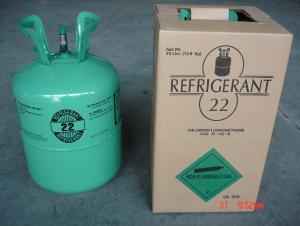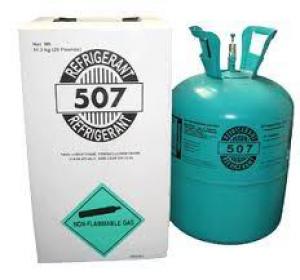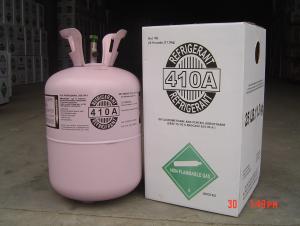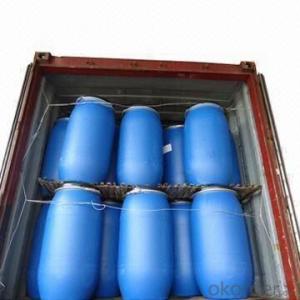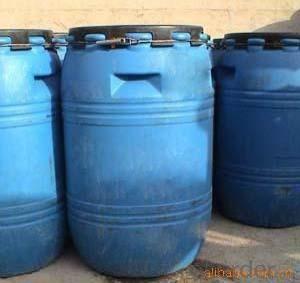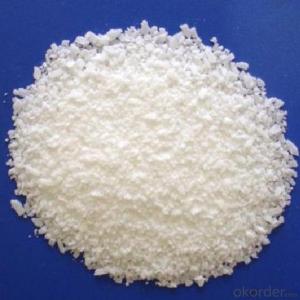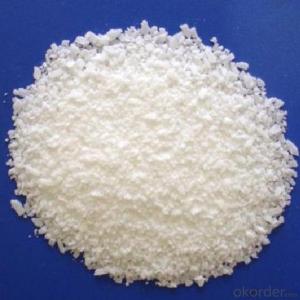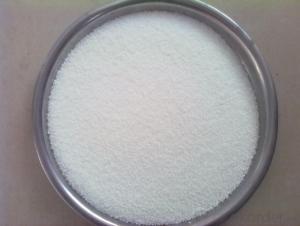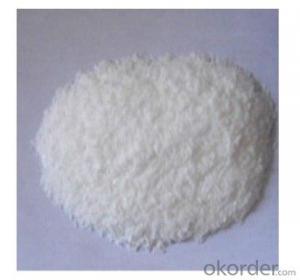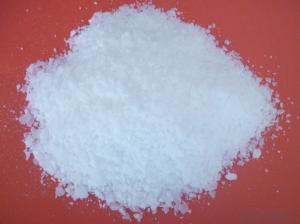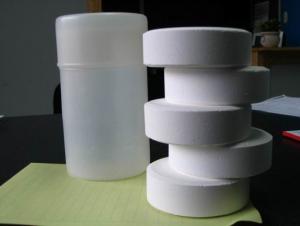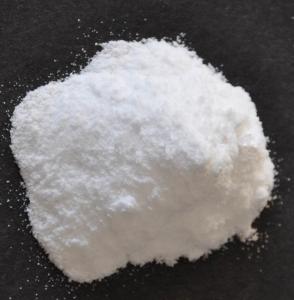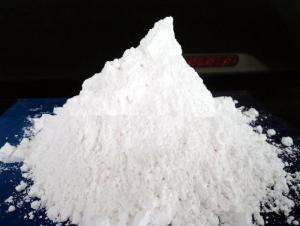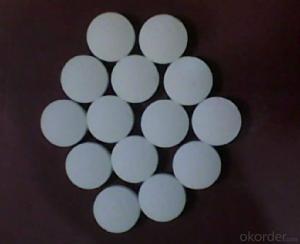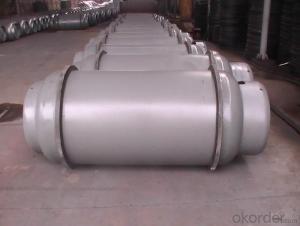Stearic Acid 1680
- Loading Port:
- Tianjin
- Payment Terms:
- TT OR LC
- Min Order Qty:
- -
- Supply Capability:
- 8000MT/month m.t./month
OKorder Service Pledge
OKorder Financial Service
You Might Also Like
Stearic acid
Formula: C18H36O2
Structural Formula:CH3(CH2)16COOH
Product Description:
Shaped like Lump, flake; Saturated fatty acid mainly with C16 and C18, white flake solid at ambient temperature, not dissolved in water, slightly dissolved in benzene and carbon bisulfide, and easily dissolved in hot alcohol. No smell no poison. It has the general chemical properties of organic carboxylic acid.
Physicochemical Properties:
pure product is white with a shiny soft small pieces, melting point 69.6 degrees, the boiling point of 376.1 degrees. Relative density 0.9408, refractive index 1.4299, slowly volatile in the 90-100 degrees. Slightly soluble in cold water, soluble in alcohol, acetone, soluble in benzene, chloroform, ethyl ether, carbon tetrachloride, carbon disulfide, toluene and so on.
Specification:
Item | Index | |||||
Grade No. | 1842 | 1838 | 1820 | 1860 | 1870 | 1880 |
Iodine value gI2/100g ≤ | ≤5.0 | ≤5.0 | ≤5.0 | ≤6.0 | ≤7.0 | ≤8.0 |
Saponification value mgKOH/g | 206~211 | 206-213 | 214-216 | 193-220 | 193-220 | 192-218 |
Acid value mgKOH/g | 208~210 | 210~211.5 | 214-225 | 182-218 | 192-218 | 193-220 |
Chroma (Hazen) ≤ | ≤60 | ≤80 | ≤100 | 200-400 | ≤150 | 400 |
Freezing point °C | 54~57 | 54~57 | 55~57 | 54 | 52 | 52 |
Moisture % ≤ | ≤0.2 | ≤0.2 | ≤0.2 | ≤0.3 | ≤0.3 | ≤0.3 |
Inorganic acid % ≤ | 0.001 | 0.001 | 0.001 | 0.001 | 0.001 | 0.001 |
Suggest Uses:
Mainly for the production of stearic acid salts: Widely used system for cosmetics, plastic cold-resistant plasticizer, release agent, stabilizer, surfactants, rubber vulcanization accelerator, waterproof agent, polishing agent, metal soap, metal mineral flotation agent, softeners, pharmaceuticals, and other organic chemicals.
In addition, oil-soluble pigments can be used as solvents, crayons transfer slip agent, waxed paper lighting agent, stearic acid glyceride emulsifier, etc..
Packing :25/50kg in PP bag ,25MT/20GP
Product Storage:
in dry warehouse ventilation should be more than 10mm from the ground to avoid damp products in the above-mentioned conditions, from the date of delivery for one year shelf life.
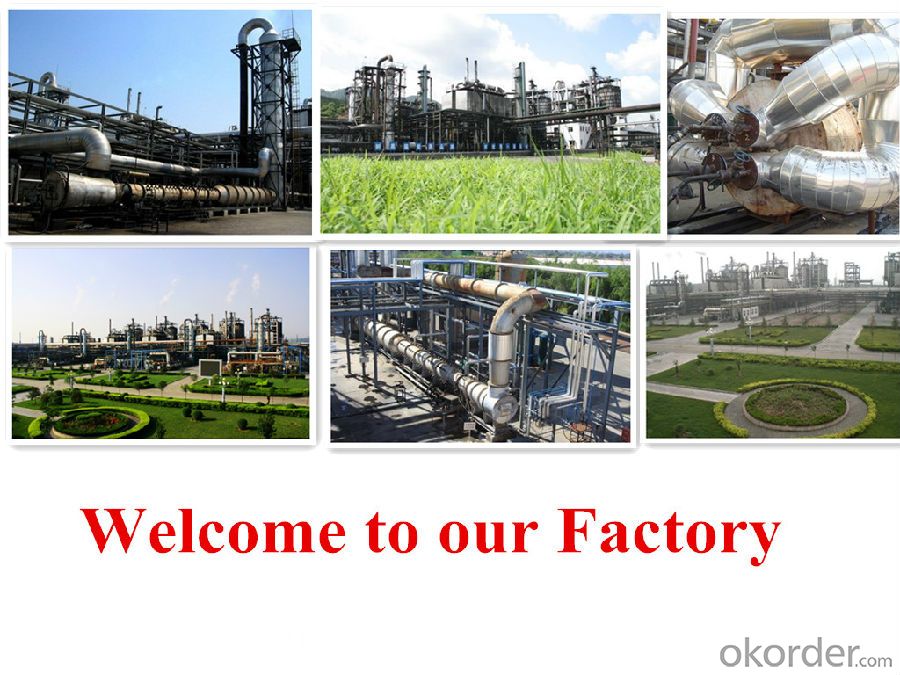

- Q: What is the relationship between hydrocarbon and hydrocarbon derivatives?
- Hydrocarbons, which are composed of two elements, carbon and hydrogen, are called hydrocarbons and hydrocarbons. It reacts with chlorine, bromine vapor, oxygen, etc. to produce hydrocarbons.
- Q: Alcohols and carboxylic acids in the hydroxyl group, the oxygen atoms are sp3 hybrid or sp2 hybrid
- Are sp3 hybrid.
- Q: Such as the problem, and how, how to squeeze methane into liquid, or how to squeeze into the liquid gas? It is still very difficult ... there is a dangerous thing .... (this is not important) high reward
- 1. A hydrocarbon containing five to eight carbons 2. Not, it is an oxygen-containing derivative of a hydrocarbon 3. A hydrocarbon and a halogenated hydrocarbon (unsaturated) polymer, an alcohol, a phenol and
- Q: What is cigarization?
- The so-called eggplant, cigar egg alcohol cycle strict sense of each different cigars will have a slight difference, but generally still follow a certain law. There is an economic cycle concept in economics that can be applied to the alcoholic mature cycle of cigar applications. Each cigar has a certain maturity cycle, after the peak after the quality will decline with the taste and decline. The more cigars are, the greater the impact of alcoholic time on them. For example, for three months, the impact on fresh cigars can be huge, but for five years or more the impact of cigarettes is minimal.
- Q: Cracked
- It is almost impossible for this problem to look at your reaction conditions. Generally speaking, the alkane reaction is mainly difficult to decompose directly into ions
- Q: Storage of organic chemicals in the warehouse, ventilation requirements
- Dangerous chemicals every time out of danger before the warehouse, dangerous warehouse should first open the fan, keep ventilated to avoid the concentration of flammable and explosive gases in the air is too high;
- Q: Is fatty acid and carboxylic acid the same thing?
- A fatty acid is a carboxylic acid which refers to a carboxylic acid having only a chain hydrocarbon group
- Q: What is the current status of carbon dioxide capture technology and how is it compared to plants that absorb carbon dioxide?
- Landlord can check their own literature what. = For example, I think this review is very good. The Although it does not include relatively new progress, but I think it is quite good. The You see such an answer to the efficiency of how low ah not as good as their own to find the literature to see right
- Q: What are the characteristics of organic compounds?
- Organic compounds are usually referred to as carbon-containing compounds, or hydrocarbon-containing compounds and their derivatives are collectively referred to as organic matter. Organic compounds are generally insoluble in water and soluble in organic solvents with lower melting points. The vast majority of organic matter heat easily decomposed, easy to burn. The reaction of organic matter is generally slow and often accompanied by side effects, and there are many kinds of organic compounds, which can be divided into two major categories of hydrocarbon and hydrocarbon derivatives. According to the organic groups contained in the functional groups, divided into alkanes, alkenes, alkynes, aromatic hydrocarbons and alcohols, aldehydes, carboxylic acids, esters and so on. According to the organic carbon molecular structure, can also be divided into open chain compounds, carbocyclic compounds and heterocyclic compounds three categories.
- Q: What are the sugar stocks?
- China Resources Industry (600191): China Resources Industry is the only sugar beet sugar companies listed companies.
Send your message to us
Stearic Acid 1680
- Loading Port:
- Tianjin
- Payment Terms:
- TT OR LC
- Min Order Qty:
- -
- Supply Capability:
- 8000MT/month m.t./month
OKorder Service Pledge
OKorder Financial Service
Similar products
Hot products
Hot Searches
Related keywords
